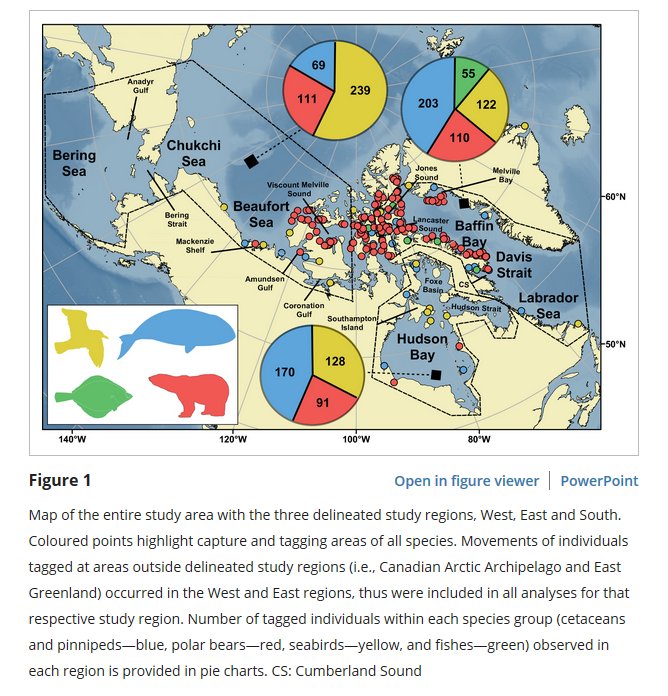Abundance and species diversity hotspots of tracked marine predators across the North American Arctic
New publication by David J. Yurkowski, Marie Auger‐Méthé, Mark L. Mallory et al

Abstract:
Aim
Climate change is altering marine ecosystems worldwide and is most pronounced in the Arctic. Economic development is increasing leading to more disturbances and pressures on Arctic wildlife. Identifying areas that support higher levels of predator abundance and biodiversity is important for the implementation of targeted conservation measures across the Arctic.
Location
Primarily Canadian Arctic marine waters but also parts of the United States, Greenland and Russia.
Methods
We compiled the largest data set of existing telemetry data for marine predators in the North American Arctic consisting of 1,283 individuals from 21 species. Data were arranged into four species groups: (a) cetaceans and pinnipeds, (b) polar bears Ursus maritimus (c) seabirds, and (d) fishes to address the following objectives: (a) to identify abundance hotspots for each species group in the summer–autumn and winter–spring; (b) to identify species diversity hotspots across all species groups and extent of overlap with exclusive economic zones; and (c) to perform a gap analysis that assesses amount of overlap between species diversity hotspots with existing protected areas.
Results
Abundance and species diversity hotpots during summer–autumn and winter–spring were identified in Baffin Bay, Davis Strait, Hudson Bay, Hudson Strait, Amundsen Gulf, and the Beaufort, Chukchi and Bering seas both within and across species groups. Abundance and species diversity hotpots occurred within the continental slope in summer–autumn and offshore in areas of moving pack ice in winter–spring. Gap analysis revealed that the current level of conservation protection that overlaps species diversity hotspots is low covering only 5% (77,498 km2) in summer–autumn and 7% (83,202 km2) in winter–spring.
Main conclusions
We identified several areas of potential importance for Arctic marine predators that could provide policymakers with a starting point for conservation measures given the multitude of threats facing the Arctic. These results are relevant to multilevel and multinational governance to protect this vulnerable ecosystem in our rapidly changing world.
